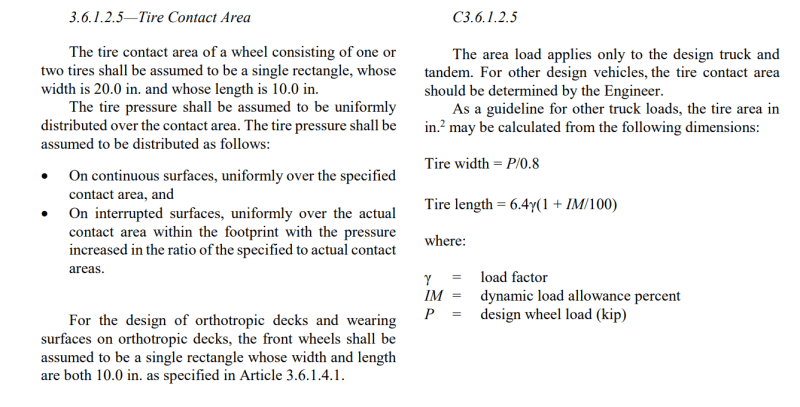Yochael1996
Civil/Environmental
Dear all,
AASHTO LRFD for bridge design specifies the tire contact area for the design load as a 20in by 10in square. This dimension only applies to design load. I am wondering if there is a computation method to estimate the tire contact area for any random truck. I searched for some references and noticed that AASHTO LRFD 2nd Edition (1998) provides a set of equation:
Length=sqrt(0.004P), Width=sqrt(0.025P), where P is the load in pounds.
Are these equations still valid? Any references that can justify these equations or any new equations are appreciated!
Thank you in advance!
Best regards,
Yochael
AASHTO LRFD for bridge design specifies the tire contact area for the design load as a 20in by 10in square. This dimension only applies to design load. I am wondering if there is a computation method to estimate the tire contact area for any random truck. I searched for some references and noticed that AASHTO LRFD 2nd Edition (1998) provides a set of equation:
Length=sqrt(0.004P), Width=sqrt(0.025P), where P is the load in pounds.
Are these equations still valid? Any references that can justify these equations or any new equations are appreciated!
Thank you in advance!
Best regards,
Yochael


![[lol] [lol] [lol]](/data/assets/smilies/lol.gif)